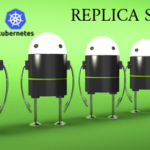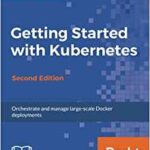Getting Started With Helm Charts
Helm makes Kubernetes more user-friendly. It is a package manager. Helm Charts makes it easier to design, install and upgrade a Kubernetes application. They manage the complexity to make the installation process repeatable. Users are easily able to update and share their designs. Also, Helm has a rollback function to easily go back to order versions.
Helm Chart Structure
With the create command, Helm provides a predetermined structure to ensure a standard.
├── Chart.yaml
├── charts
├── templates
│ ├── NOTES.txt
│ ├── _helpers.tpl
│ ├── deployment.yaml
│ ├── ingress.yaml
│ └── service.yaml
└── values.yaml
The files above will be auto-generated. Helm uses YAML format for configuration files.
Invoking Helm
In order to use Helm, you’ll need the following things:
- A Kubernetes Cluster (Minikube provides a simple way of running Kubernetes)
- Install Helm and Tiller, the server-side component.
(Make sure the Minikube and Tiller versions are compatible with the Kubernetes Cluster)
Once you have all the components installed, start your minikube:
You will also need to use the following command to initialize Helm and Tiller:
Next, use the following Helm command to create the structure described above:
Writing Your First Helm Chart
Let’s check the status of the pods:
NAMESPACE NAME READY STATUS RESTARTS AGE
kube-system kube-addon-manager-minikube 1/1 Running 2 1h
kube-system kube-dns-54cccfbdf8-xcltd 3/3 Running 6 1h
kube-system kubernetes-dashboard-77d8b98585-sj9lm 1/1 Running 2 1h
kube-system storage-provisioner 1/1 Running 2 1h
kube-system tiller-deploy-59d854595c-97hdp 1/1 Running 2 1h
The tiller pod and the minikube pods are running. Let’s make some changes to Helm Charts. We are going to open the value.yml. It looks like this:
# This is a YAML-formatted file.
# Declare variables to be passed into your templates.
replicaCount: 1
image:
repository: heroku/nodejs-hello-world
tag: stable
pullPolicy: IfNotPresent
service:
type: ClusterIP
port: 80
ingress:
enabled: false
annotations: {}
# kubernetes.io/ingress.class: nginx
# kubernetes.io/tls-acme: "true"
path: /
hosts:
– chart-example.local
tls: []
# – secretName: chart-example-tls
# hosts:
# – chart-example.local
resources: {}
# We usually recommend not to specify default resources and to leave this as a conscious
# choice for the user. This also increases chances charts run on environments with little
# resources, such as Minikube. If you do want to specify resources, uncomment the following
# lines, adjust them as necessary, and remove the curly braces after ‘resources:’.
# limits:
# cpu: 100m
# memory: 128Mi
# requests:
# cpu: 100m
# memory: 128Mi
nodeSelector: {}
tolerations: []
affinity: {}
The highlighted line has been changed. Instead of nginx, we are going to download heroku/nodejs-hello-world. You can set the default values in this value.yml file. They will be shared with other files.
If we check Helm, we don’t see anything:
Let’s start the Helm Chart:
NAME: kissing-markhor
LAST DEPLOYED: Fri Mar 9 09:13:04 2018
NAMESPACE: default
STATUS: DEPLOYED
RESOURCES:
==> v1/Service
NAME TYPE CLUSTER-IP EXTERNAL-IP PORT(S) AGE
kissing-markhor-hello-world ClusterIP 10.110.109.73 <none> 80/TCP 1s
==> v1beta2/Deployment
NAME DESIRED CURRENT UP-TO-DATE AVAILABLE AGE
kissing-markhor-hello-world 1 1 1 0 1s
==> v1/Pod(related)
NAME READY STATUS RESTARTS AGE
kissing-markhor-hello-world-6bbb947b9c-rttnz 0/1 ContainerCreating 0 1s
NOTES:
NOTES:
1. Get the application URL by running these commands:
export POD_NAME=$(kubectl get pods –namespace default -l "app=hello-world,release=kissing
-markhor" -o jsonpath="{.items[0].metadata.name}")
echo "Visit http://127.0.0.1:8080 to use your application"
kubectl port-forward $POD_NAME 8080:80
The noticeable part is the “NAME”. This name was generated by Helm.
Let’s check Helm:
NAME REVISION UPDATED STATUS CHART NAMESPACE
kissing-markhor 1 Fri Mar 9 09:13:04 2018 DEPLOYED hello-world-0.1.0 default
Also Kubernetes:
NAMESPACE NAME READY STATUS RESTARTS AGE
default kissing-markhor-hello-world-6bbb947b9c-rttnz 1/1 Running 0 5m
kube-system kube-addon-manager-minikube 1/1 Running 2 2h
kube-system kube-dns-54cccfbdf8-xcltd 3/3 Running 6 2h
kube-system kubernetes-dashboard-77d8b98585-sj9lm 1/1 Running 2 2h
kube-system storage-provisioner 1/1 Running 2 2h
kube-system tiller-deploy-59d854595c-97hdp 1/1 Running 2 2h
So the pod has been deployed to Kubernetes. We can use port forwarding:
Now you should be able to check your deployed application.
<!DOCTYPE html>
<html>
<head>
<title>Welcome to nginx!</title>
<style>
body {
width: 35em;
margin: 0 auto;
font-family: Tahoma, Verdana, Arial, sans-serif;
}
</style>
</head>
<body>
<h1>Welcome to nginx!</h1>
<p>If you see this page, the nginx web server is successfully installed and
working. Further configuration is required.</p>
<p>For online documentation and support please refer to
<a href="http://nginx.org/">nginx.org</a>.<br/>
Commercial support is available at
<a href="http://nginx.com/">nginx.com</a>.</p>
<p><em>Thank you for using nginx.</em></p>
</body>
</html>
Alternatively, you can check http://127.0.0.1:8080 to see the newly created application. Let’s tidy up. Find the server name:
NAME REVISION UPDATED STATUS CHART NAMESPACE
kissing-markhor 1 Fri Mar 9 09:13:04 2018 DEPLOYED hello-world-0.1.0 default
Use the following command to delete:
release "kissing-markhor" deleted
Let’s check the cluster:
NAMESPACE NAME READY STATUS RESTARTS AGE
kube-system kube-addon-manager-minikube 1/1 Running 2 2h
kube-system kube-dns-54cccfbdf8-xcltd 3/3 Running 6 2h
kube-system kubernetes-dashboard-77d8b98585-sj9lm 1/1 Running 2 2h
kube-system storage-provisioner 1/1 Running 2 2h
kube-system tiller-deploy-59d854595c-97hdp 1/1 Running 2 2h
We can see the kissing-marker pod is gone.
Conclusion
The above should give you the inspiration to start using Helm Charts. It should make your Kubernetes deployments easier to handle.







